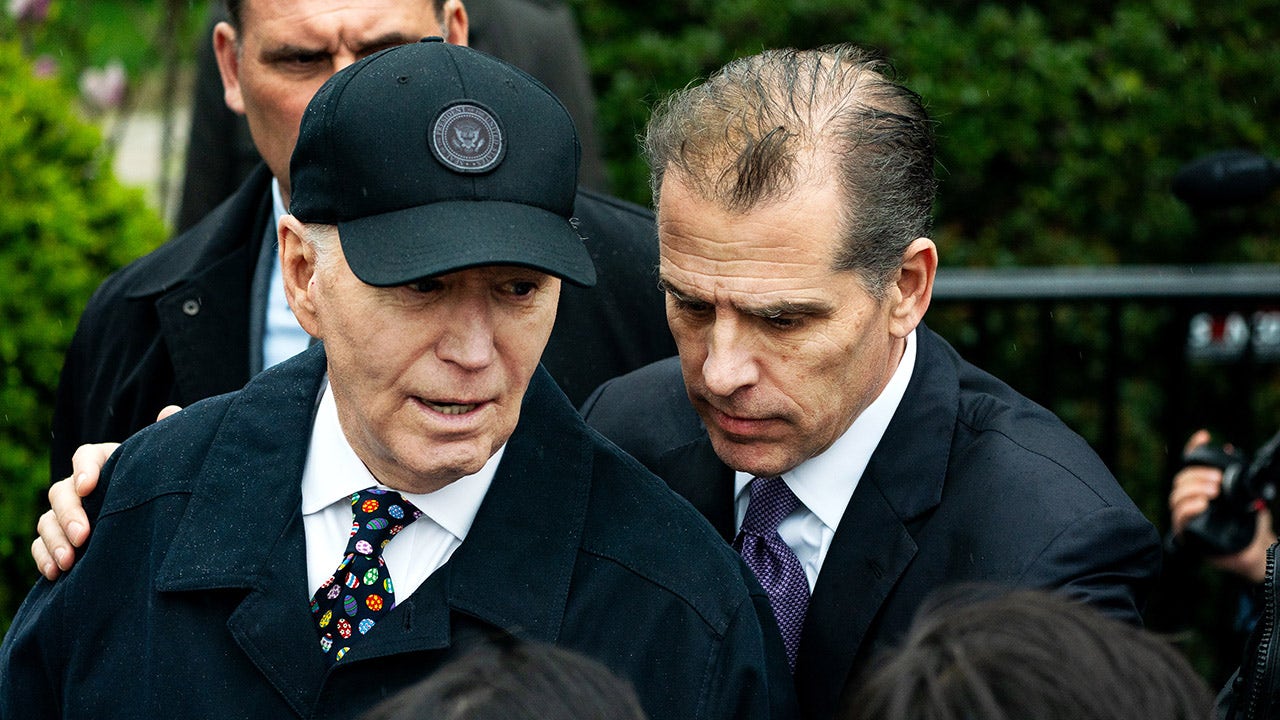Arizona
Heat records toppled like dominoes this year. How do we know which numbers tell the story?
Heat records have been falling like dominoes this year, especially in Arizona. You might even be tired of hearing about it. But as temperatures cool and analysts compile year-end reports, some differing results are worth a review.
In July, Phoenix set a new national record for hottest month in a U.S. city after 31 consecutive days of at least 110 degrees Fahrenheit (starting June 30). Sky Harbor International Airport logged record highs on 12 of those days, with three hitting 119 degrees, and new sweltering lows on 16 July days.
The following month became Phoenix’s second-hottest August after 2020, according to the National Weather Service, with an average daily high of 109.5 degrees. It also marked a new highest average low of 88 degrees, a staggering 4.4-degree increase over August lows recorded between 1991 and 2020.
As of late September, the number of days with temperatures at or above 110 degrees in Phoenix for 2023 had crept to 55, breaking the record of 53 set in 2020. Two new daily temperature records were also set that month, of 110 degrees on the 8th and 113 degrees on the 10th, as reported by the National Oceanic and Atmospheric Administration’s Online Weather Data Daily Almanac.
Another Phoenix heat record toppled in October, which ended as the fourth-warmest for that month globally since 1880 by NASA’s calculations, but the warmest if you ask the European Union’s Earth Observation Programme, owing to differences in how the two agencies evaluate data-sparse regions like the Arctic.
Then, in early November, the nonprofit science education organization Climate Central stacked another domino up, then knocked it over when it defined a new way to measure heat over the course of a year and determined that November 2022 to October 2023 was the Earth’s hottest 12-month streak on record.
But in the same report, the scientists at Climate Central determined that Phoenix only experienced 21 days of extreme heat over the past 12 months and that the longest extreme heat streak was 12 days, starting on July 12, 2023. It also said that, overall, Phoenix did not have an exceptionally warm past 12 months, giving the city a minus 0.1 degree Celsius annual temperature anomaly compared to averages over the past 30 years.
Houston, Baton Rouge, New Orleans, Austin, San Antonio and Dallas all ranked higher on Climate Central’s list of U.S. cities that experienced brutal heat over the past 12 months, with Phoenix coming in at 31st worldwide. That’s even though The Weather Channel, among others, crowned Phoenix as home to the hottest month and various outlets have long hailed it as America’s hottest big city.
You don’t have to be good at math to realize that 55 versus 21 days of extreme heat and a 31-day versus a 12-day heat wave are pretty different answers to seemingly the same question. And you don’t have to track the weekly heat-associated death reports released by Maricopa County, which have already far surpassed last year’s record total of 425 deaths, to know this summer was especially brutal in Arizona.
So, what gives? Why are Climate Central’s conclusions about heat extremes so different from those we’ve been reporting all summer at The Arizona Republic, which are based on intel from government and state agencies, like the Arizona State University Climate Office?
And how, in this age of rising climate stakes and stubborn climate denial, are we to know which numbers to believe, which stats to sweat?
Confusing stats don’t mean confused scientists
The list of ways to measure records to be broken, like the length of a game of dominoes, can go on pretty much as long as one wants to spend lining up new targets to fall. But that doesn’t make real-life heat trends spurious. It also does not mean that “statistics can say whatever you want them to,” as some readers have alleged.
There are right and wrong approaches to conduct analyses of complex climate trends, with statistical tests and checkpoints designed to keep researchers on track along the way. But there are also many valid ways to quantify something like temperature extremes.
An air temperature reading, for example, can vary widely depending on whether it is taken in the sun or the shade, at 9 a.m. or at 3 p.m., in an urban environment or over undeveloped desert and even at four inches versus four feet off the ground. The method that is right is the one that most directly answers the specific question at hand, such as quantifying heat extremes experienced by unhoused people camped out overnight directly on the asphalt versus gauging when to cancel recess on a shaded, grassy playground.
Our investigation into heat and housing: More homes mean more heat. Can new building codes help save metro Phoenix from disaster?
The climate communication game is all about learning to speak the same language and highlighting the most relevant metrics for each region or situation. Meteorologists consider how much jargon is necessary to convey concepts effectively and efficiently. Do desert dwellers need to worry about “wet bulbs” and “heat indexes,” which incorporate measures of humidity, wind speed, sun angle and solar radiation in direct or shaded light? Or can simple thermometer readings tell us what we need to know?
It can be confusing. But that doesn’t mean climate scientists are confused.
In the Climate Central report released earlier this month, Table 3 lists the “longest extreme heat streaks among largest cities” for its analysis period of November 2022 to October 2023. Phoenix is notably absent, despite being larger than every U.S. city listed and having endured summer heat worthy of international headlines.
The table is not wrong, except perhaps for leaving out critical descriptive context in its title. The 10 large cities listed are those that, based on Climate Central’s peer-reviewed methodology, had streaks of high temperatures that deviated most from that region’s baseline normal over the past 30 years. So, it wasn’t the hottest for the longest or even the most “extreme” in terms of impacts or survivability — but the most abnormal given the recorded history of temperature trends.
That’s an important metric for tracking the global influence of climate change. But in a place like Phoenix, temperature anomalies are an insufficient way to communicate heat risks.
Phoenix is in category of its own
These nuances underpinning extreme heat records are why, when the Climate Central report dropped Nov. 9 and was publicized by dozens of news outlets the same week, The Arizona Republic hit pause on coverage of the report — lest their numbers seem to contradict heat stats we’ve been publishing all summer — until a reporter could speak with Climate Central’s scientists about their methods.
“Phoenix really is dealing with these temperatures that push the limits of where humans can survive, and you saw that this summer with people succumbing to the heat. So it’s a little bit of a different category,” Andrew Pershing, lead climate scientist at Climate Central, told The Republic in a conversation about their recent 12-month analysis. “When we think about heat and health, to be able to do this (type of analysis) on a global basis, you do it based on these percentiles or locally-specific thresholds that reflect the temperatures people have gotten accustomed to over a life or over a year.”
In addition to people in Phoenix being more used to heat than in most other U.S. cities, Pershing continued, the shelters and technology commonly available in a place can make a huge difference in determining consequences of “extremes” or “anomalies,” however those terms are defined. So the logic is that, while Phoenix is an outlier in terms of thermometer readings, it is also somewhat buffered from heat impacts by the fact that 98% of its homes have an air conditioning unit installed (though some residents can’t afford to turn it on when it matters most).
More: In a heat wave, some people wait too long to turn on the AC. Smart data use could help
Still, thermometer readings do matter and signal alarming changes afoot.
“One place in the world where the absolutes are so meaningful is a place like Phoenix, because you guys are just so hot,” Pershing said. “Temperatures in Phoenix can become global news because everybody looks at that and says, ‘Wow, that’s really hot.’ Both the scale and the intensity of the impact is really remarkable. So, I think Phoenix has it hard from what climate is giving them but I think the city is doing a lot of really interesting stuff that other places will learn from.”
Hard-knock lessons from Phoenix
One Arizonan offering climate lessons is State Climatologist Erinanne Saffell. Each month, she issues her own report on how recent local measurements stack up against past records via weather and climate webinars she hosts for the public every third Thursday. She also recently reported stats for “Water Year 2023,” the annual timeframe for which runs between October and September, another domino.
Saffell didn’t have time to review the Climate Central report for The Republic, but said their finding that Phoenix did not have an exceptionally hot 2023, and was in fact 0.1 degree Celsius colder than average, makes sense given that “Arizona was exceptionally cold from last November to this June.”
“It has been a very interesting 12 months, most certainly!” Saffell wrote in an email. “The average statewide temperature (between last October and this September) was the 2nd coldest 12 months in the past 30 years.”
History of state climatology: The state climatologist office that almost wasn’t, and what it does for Arizona now
Climate scientists understand that, against the backdrop of overall warming average temperatures, changing concentrations of greenhouse gases in the atmosphere from burning fossil fuels are also causing “global weirding,” or unexpected weather shifts including abnormal cold snaps and extreme winter storms. It’s why communicators ditched the term “global warming” for the more descriptive “climate change.”
July was the month that really set Arizona apart this year, Saffell said, confirming it was the hottest July statewide since records began 129 years ago.
“Reasons why Arizona and the Southwest were so hot in July are tied to an exceptionally strong heat dome over the Southwest,” she wrote. “The Monsoon Ridge that charges our thunderstorms in summer was obliterated by the July heat dome, so lack of cooling thunderstorms also increased the Southwest heat. As El Niño started strengthening, it contributed locally and globally to the summer heat, as did other factors.”
Bearing witness to the signal through the noise
The local, seasonal granularity tracked by experts like Arizona’s state climatologist can be difficult to represent in global analyses of average temperatures. But as more scientist scrutinize climate trends using new dominoes, that they too will fall becomes ever more clear.
Climate Central’s goal for its unusual 12-month analysis was to focus on global anomalies while showcasing its “Climate Shift Index” tool that estimates how likely it is deviations are the result of human-caused climate change. Their selection of the November-through-October timeframe as a new type of domino to stack up was also, according to the report’s introduction, meant to offer fresh calculations ahead of COP28, the annual United Nations Climate Change Conference set to begin Nov. 30 in Dubai.
Climate Central sees value in publishing analyses using peer-reviewed methods directly on their website without subjecting each report to the peer-review process, which can take months or years, Pershing said. They operate outside of academic norms on the philosophy that the world needs timely updates on the global progress of climate change to help facilitate important conversations about climate action.
Efforts like this have sometimes muddied the message for consumers of climate news, as it can be tricky to determine how much weight to give seemingly conflicting information. But as more extreme heat and stronger storms become harder to ignore, that climate communication paradox could resolve itself.
Read our climate series: The latest from Joan Meiners at azcentral, a column on climate change that publishes weekly
The big picture bottom line at this point, Pershing said, is that average temperatures are warming everywhere no matter how you slice the data, and the occurrence of specific heat events can now be increasingly attributed to the emissions released when humans burn fossil fuels for energy.
“We can see that every year the temperatures ticks up and our signal becomes stronger,” he said. “The noise and day-to-day variability is pretty much the same, but that shift becomes bigger every year. Unfortunately, we’re now often adding a hot year on top of another hot year, so it just becomes easier to see that.”
In Phoenix and elsewhere this summer, labeling the heat as extreme didn’t really require advanced tools or record designations. It raises the question of when the need to fine-tune communication about the reality of a changing climate may finally be overtaken by the clarity of its impacts.
Joan Meiners is the climate news and storytelling reporter at The Arizona Republic and azcentral.com. Before becoming a journalist, she completed a doctorate in ecology. Follow Joan on Twitter at @beecycles or email her at joan.meiners@arizonarepublic.com. Read more of her coverage at environment.azcentral.com.
Sign up for AZ Climate, The Republic’s weekly climate and environment newsletter.
Support climate coverage and local journalism by subscribing to azcentral.com at this link.

Arizona
Cardinals Rank Near Top of NFL in Cap Space

ARIZONA — The Arizona Cardinals received nearly $16 million more in salary over the weekend after former left tackle D.J. Humphries’ salary officially came off Arizona’s books.
Humphries – who tore his ACL towards the end of 2023 – was released with a Post June 1 designation, meaning he effectively became a free agent back in March while his cap hit remained with the Cardinals until just now.
For a deeper dive into the financial aspects, you can read here.
$15.95 million was officially added to the Cardinals’ 2024 salary cap space, pushing them near the top of the league.
*all figures via Over The Cap*
1. New England Patriots ($46.4 million)
The Patriots’ top earner is Matt Judon at $14.6 million in 2024 – in terms of cap number. New England has just five players making more than $8 million this season.
2. Washington Commanders ($43.4 million)
Washington’s salary is fairly top heavy this season, as three players have cap numbers of $21 million or higher in Terry McLaurin ($24.1 million), Daron Payne ($21.6 million) and Jonathan Allen ($21.4 million).
Their next highest cap hit is Andrew Wylie at $9.4 million.
3. Detroit Lions ($40.3 million)
Though recently extended, Jared Goff’s $27.2 million cap hit is tops in Detroit with Taylor Decker ($19.1 million) and Frank Ragnow ($12.8 million) right behind.
4. Arizona Cardinals ($35.5 million)
Kyler Murray’s massive $49.1 million cap hit ranks near the top of the league and comfortably takes the No. 1 spot for the Cardinals. Next is Budda Baker at $19 million and Jalen Thompson at $12.4 million.
They’re the only three players that have a cap hit of $10+ million for 2024 now that Humphries’ contract is off their books.
5. Jacksonville Jaguars ($34.1 million)
The Jaguars’ top earner for 2024 is former Cardinals wideout Christian Kirk, who has a cap hit of $24.2 million. Cam Robinson’s $21.9 million closely follows while five others are set to make north of $10 million.
Part of Arizona’s pristine cap space is the investment in youth for the Cardinals under second-year general manager Monti Ossenfort and his two recent draft classes.
The fortitude to move on from big (and expensive) names has also benefited Arizona during their rebuild.
Arizona
Arizona Lottery Pick 3, Fantasy 5 results for June 2, 2024

Odds of winning the Powerball and Mega Millions are NOT in your favor
Odds of hitting the jackpot in Mega Millions or Powerball are around 1-in-292 million. Here are things that you’re more likely to land than big bucks.
The Arizona Lottery offers multiple draw games for those aiming to win big.
Arizona offers Powerball, Mega Millions, The Pick, Triple Twist, Fantasy 5 and Pick 3 as well as Scratchers, Quick Draw and Fast Play.
Lottery players have seen enormous jackpots recently, with previous winners of both the Powerball and Mega Millions breaking into the top 10 largest jackpots in U.S. lottery history. Money raised from Arizona lottery games goes toward funding higher education, health and human services, environmental conservation and economic and business development in the state.
Here’s a look at June 2, 2024 results for each game:
Pick 3
3-8-2
Check Pick 3 payouts and previous drawings here.
Fantasy 5
01-13-15-37-39
Triple Twist
12-16-17-18-19-37
Feeling lucky? Explore the latest lottery news & results
Are you a winner? Here’s how to claim your lottery prize
All Arizona Lottery retailers will redeem prizes up to $100 and may redeem winnings up to $599. For prizes over $599, winners can submit winning tickets through the mail or in person at Arizona Lottery offices. By mail, send a winner claim form, winning lottery ticket and a copy of a government-issued ID to P.O. Box 2913, Phoenix, AZ 85062.
To submit in person, sign the back of your ticket, fill out a winner claim form and deliver the form, along with the ticket and government-issued ID to any of these locations:
Phoenix Arizona Lottery Office: 4740 E. University Drive, Phoenix, AZ 85034, 480-921-4400. Hours: 7:30 a.m. to 5 p.m. Monday through Friday, closed holidays. This office can cash prizes of any amount.
Tucson Arizona Lottery Office: 2955 E. Grant Road, Tucson, AZ 85716, 520-628-5107. Hours: 7:30 a.m. to 5 p.m. Monday through Friday, closed holidays. This office can cash prizes of any amount.
Phoenix Sky Harbor Lottery Office: Terminal 4 Baggage Claim, 3400 E. Sky Harbor Blvd., Phoenix, AZ 85034, 480-921-4424. Hours: 8:30 a.m. to 5 p.m. Monday through Sunday, closed holidays.This office can cash prizes up to $49,999.
Kingman Arizona Lottery Office: Inside Walmart, 3396 Stockton Hill Road, Kingman, AZ 86409, 928-753-8808. Hours: 8 a.m. to 8 p.m. Monday through Friday, 8:30 a.m. to 5 p.m. Saturday and Sunday, closed holidays. This office can cash prizes up to $49,999.
Check previous winning numbers and payouts at https://www.arizonalottery.com/.
Winning lottery numbers are sponsored by Jackpocket, the official digital lottery courier of the USA TODAY Network.
Where can you buy Arizona lottery tickets?
Tickets can be purchased in person at gas stations, convenience stores and grocery stores. Some airport terminals may also sell lottery tickets.
You can also order tickets online through Jackpocket, the official digital lottery courier of the USA TODAY Network, in these U.S. states and territories: Arizona, Arkansas, Colorado, Idaho, Maine, Massachusetts, Minnesota, Montana, Nebraska, New Hampshire, New Jersey, New Mexico, New York, Ohio, Oregon, Puerto Rico, Texas, Washington, D.C. and West Virginia. The Jackpocket app allows you to pick your lottery game and numbers, place your order, see your ticket and collect your winnings all using your phone or home computer.
Jackpocket is the official digital lottery courier of the USA TODAY Network. Gannett may earn revenue for audience referrals to Jackpocket services. Must be 18+, 21+ in AZ and 19+ in NE. Not affiliated with any State Lottery. Gambling Problem? Call 1-877-8-HOPE-NY or text HOPENY (467369) (NY); 1-800-327-5050 (MA); 1-877-MYLIMIT (OR); 1-800-981-0023 (PR); 1-800-GAMBLER (all others). Visit jackpocket.com/tos for full terms.
This results page was generated automatically using information from TinBu and a template written and reviewed by an Arizona Republic editor. You can send feedback using this form.
Arizona
Arizona tribe temporarily bans dances after fatal shooting of police officer

The Gila River Indian Community has issued a temporary ban on dances after a tribal police officer was fatally shot and another wounded while responding to a reported disturbance at a Santan home, tribal officials said Sunday.
Stephen Roe Lewis, governor of the tribe south of Phoenix, said a special meeting of community council’s leaders was held Saturday night.
The council approved a temporary moratorium on all permitted and non-permitted dances in the community, effective immediately, along with enhanced penalties for trespassing and disorderly conduct, he said.
The Phoenix FBI and Gila River Police Department will conduct a joint investigation of the shooting, though many details have not yet been released.
The Arizona Republic reported that the shooting occurred at a teenager’s birthday party in Santan, located in one of the tribal community’s seven districts.
Joshua Briese, who had been with the Gila River Police Department for less than a year and had not completed field training, responded to the scene along with another tribal police officer around 2 a.m. Saturday on a 911 disturbance call involving a large crowd.
Police said multiple gunshots were fired and both officers were struck, with four other people wounded.
Briese was declared dead at a hospital, and the other officer, whose name hasn’t been released yet, was listed in serious but stable condition, according to police.
One of the four people wounded later died, police said. The names of the victims weren’t immediately available Sunday.
“We extend our deepest condolences to his family, friends and colleagues,” the FBI Phoenix said in a statement Saturday.
“Our hearts and prayers are with these police officers, their families, and everyone impacted by this tragic incident,” Gila River police said.
Briese, 23, was the son of a former sheriff’s deputy in Montana who also died in the line of duty.
The Yellowstone County Sheriff’s Office said in a Facebook post that David Briese was killed in a November 2006 car crash.
News reports said David Briese was responding at the time to a backup call for an officer who was dealing with a combative impaired driver in Billings, Montana.
-

 World1 week ago
World1 week agoFamilies of Uvalde school shooting victims sue Microsoft, Meta and gunmaker
-

 Politics1 week ago
Politics1 week agoDefense Secretary Lloyd Austin to undergo nonsurgical procedure, Deputy Kathleen Hicks will assume control
-

 News1 week ago
News1 week agoHere are three possible outcomes in the Trump hush money trial : Consider This from NPR
-

 News1 week ago
News1 week agoPrimate remains on the loose in South Carolina | CNN
-

 World1 week ago
World1 week agoState of the Union: Europe's divisions over the Middle East
-

 News1 week ago
News1 week agoBoos and anti-Trump chants at Libertarian convention where former president is set to speak
-

 Movie Reviews1 week ago
Movie Reviews1 week ago'Bhaiyya Ji' movie review: Bajpayee’s 100th film fails to deliver
-

 World1 week ago
World1 week agoItaly pledges millions to support Palestinians at Rome meeting



















